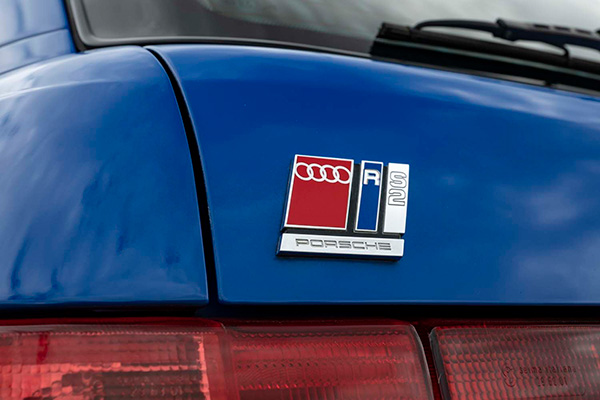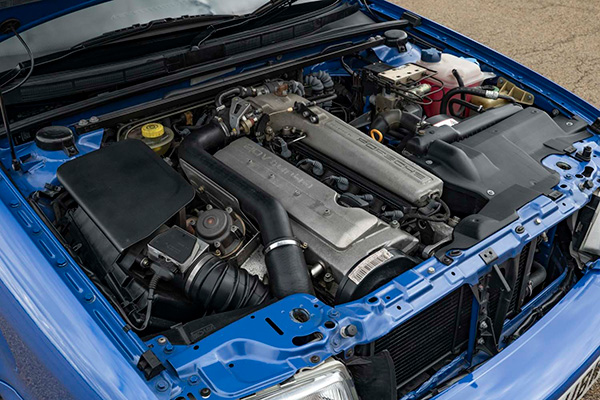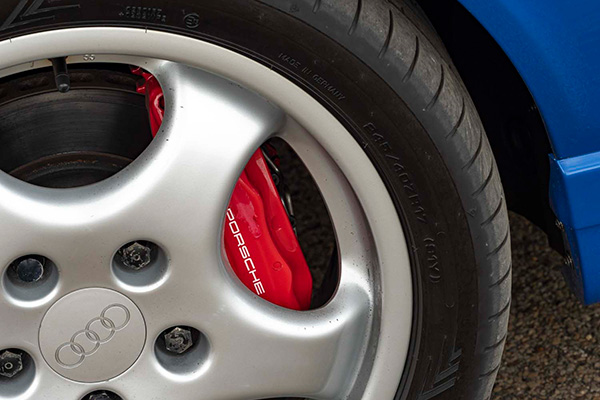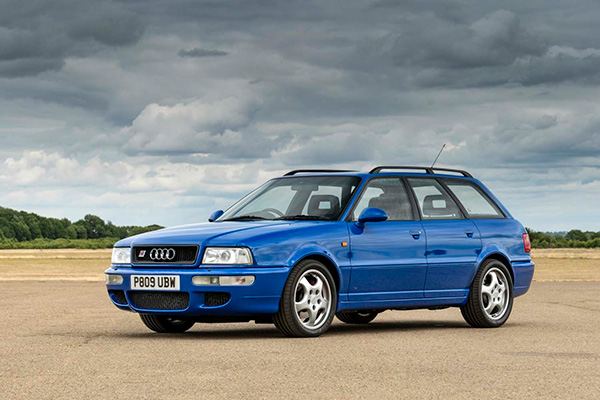Audi RS2 – the car that changed Audi
Porsche has laid its hands on many cars, from the SEAT Ibiza to the Vauxhall Zafira, but none has been more closely linked with the Stuttgart marque than the Audi RS2. Given this close tie to Porsche, and Audi’s ease with letting the world know, goes a long way to explaining why the RS2 is the car that changed Audi’s fortunes forever.

Prior to the RS2, Audi was mostly well regarded for its solidly built and ever more sleekly aerodynamic saloons and estates. It also had the sensational Quattro in its back catalogue and a cabinet full of rally trophies to boot. However, by the early 1990s, the German firm’s performance star was waning. The S2 that replaced the iconic Quattro just didn’t have the same appeal to buyers and the likes of the Ford Escort RS Cosworth and Subaru Impreza Turbo had grabbed the rally-bred road car market. Audi needed something fast.
This is where Ferdinand Piëch played his part. He had worked for Porsche in the 1960s and ’70s, so he knew what the sports car firm was capable of, and he was aware Porsche had some spare capacity as it had finished building the Mercedes 500E at its Rossle-Bau factory. The timing was ripe for Porsche to take on another project, so Audi charged its neighbour with developing a new car from the existing Audi 80 and the engine from the S2.

The first thing Porsche did was re-engineer the 2,226cc five-cylinder engine with a larger KKK turbocharger and added a bigger intercooler. New camshafts added to the specification, while larger injectors were used to keep up with the increased fuel demand. There was also a freer flowing induction system, revised exhaust, and even an uprated engine ECU brain to make the most of the modifications.
The end result was a motor putting out 315bhp compared to the S2’s 220bhp. Yet this was far from the end of the changes Porsche deemed necessary to make the RS2 the car they thought Audi needed. The four-wheel drive system from the S2, which was also used in some 80 models, was kept, but there was now an electrically locking rear differential that could be manually engaged. The brakes were upped in size to 304mm ventilated discs at the front with huge four-pot Brembo calipers branded with the Porsche name. Buyers could go even further with the option of bigger 322mm discs, which was part of the reason Porsche demanded a 17-inch wheel to be used on the RS2. At the back, Brembo again provided the calipers for the 299mm discs, and Bosch supplied the ABS anti-lock system that was very advanced for the time.

Suspension changes were also wrought, most noticeably a whopping 40mm lowering of the car on its springs. The 17-inch wheels were the same as those used by Porsche on its 968 Clubsport model with their distinctive five-spoke style, and they gave the RS2 much of its attitude. Other parts were also lifted direct from the Porsche parts shelf, such as the front indicator and side light units from a 911, and the door mirrors that are identical to a 911 Turbo’s of the same era.
On the inside, Porsche and Audi settled on Recaro sports seats, a three-spoke steering wheel with just the right diameter of rim, and a choice of either wood or carbon fibre trim inserts. However, the most notable exterior and interior design flourish was the choice of the Avant estate body shape for the RS2. Some claimed this was just for publicity, while others thought aerodynamics were the reason for this choice. Whatever the thinking, it was an inspired move and set the Audi RS2 apart from its most obvious rival, the BMW M3. The Volvo 850 T5-R was quick and also had a turbocharged five-cylinder engine, but its performance was nowhere near as rapid as the Audi’s.

The company claimed the RS2 dealt with 0-60mph in 5.4 seconds, but magazine road tests of the time saw figures as low as 4.8 seconds thank to the enormous traction of the Quattro four-wheel drive system. Just as momentously, when Autocar ran its full figures on the RS2, it found the Audi accelerated from a standing start to 30mph more rapidly than a McLaren F1. In that moment, Audi’s entire company fortunes pivoted in a different direction from where it had previously been headed. It was the one fact many non-car fans knew about the RS2, regardless of its top speed of 163mph or ability to carry up to 1,200-litres of luggage.
In the UK, just 180 RS2s found their way here with right-hand drive out of a total production of 2,900 cars. Audi had intended to make just 2,200 RS2s but demand was such that only a fool would pass up the opportunity to bank some more money and allow a greater number of drivers to experience that fastest estate car in the world at that time. A list price of £45,705 in 1994 kept the RS2 exclusive, and you’ll pay around the same for a decent example today that makes it seems like a bargain.

It’s all the more of a good deal when you consider the legacy of the RS2. The RS4 of 1999 and RS6 that arrived in 2002 were every bit as special and dramatic in their own ways to uphold the values of the RS badge. Over time, a whole RS division has developed at Audi devoted to its performance cars. More than anything else, what shows just how far ahead of the game the RS2 was, and how it changed Audi, is it defined the fast estate market and its performance remains more than respectable against many of the latest crop in this class. Audi really does owe a lot of thanks to the RS2… and Porsche.

COMMENT